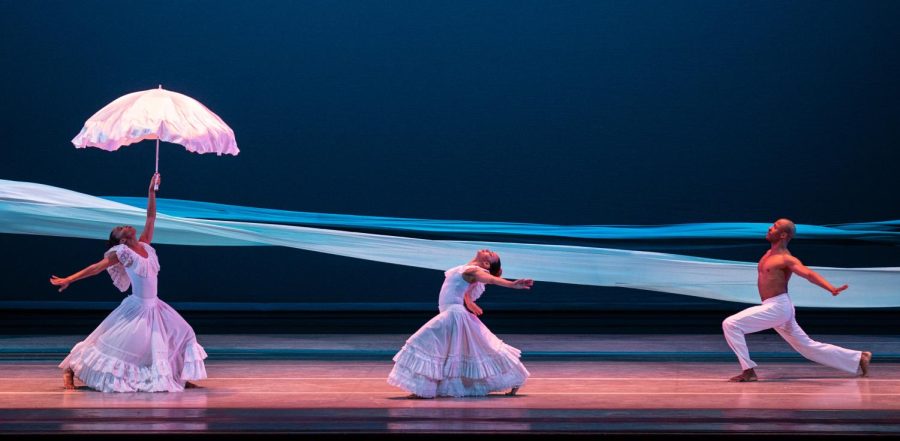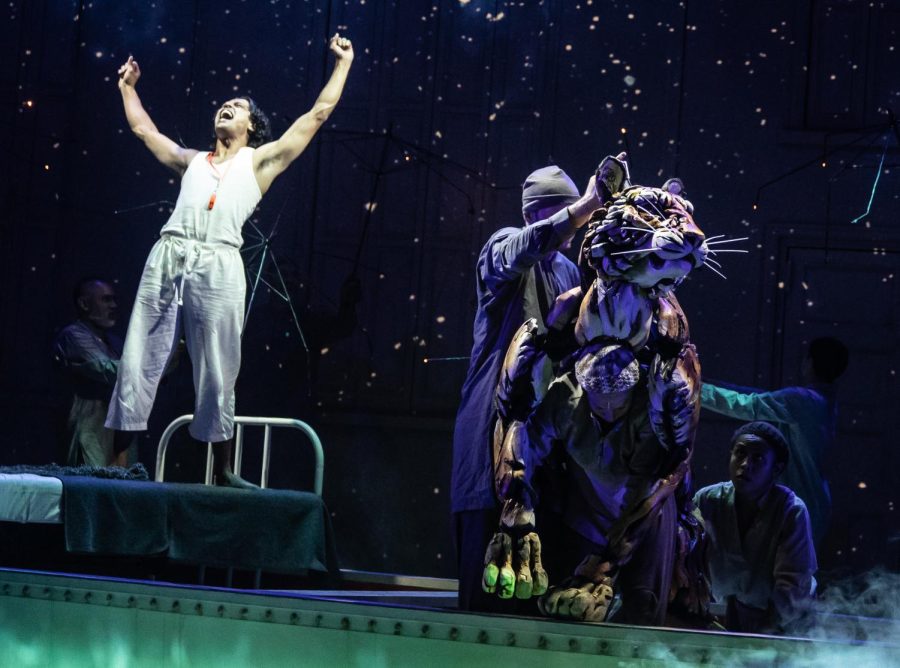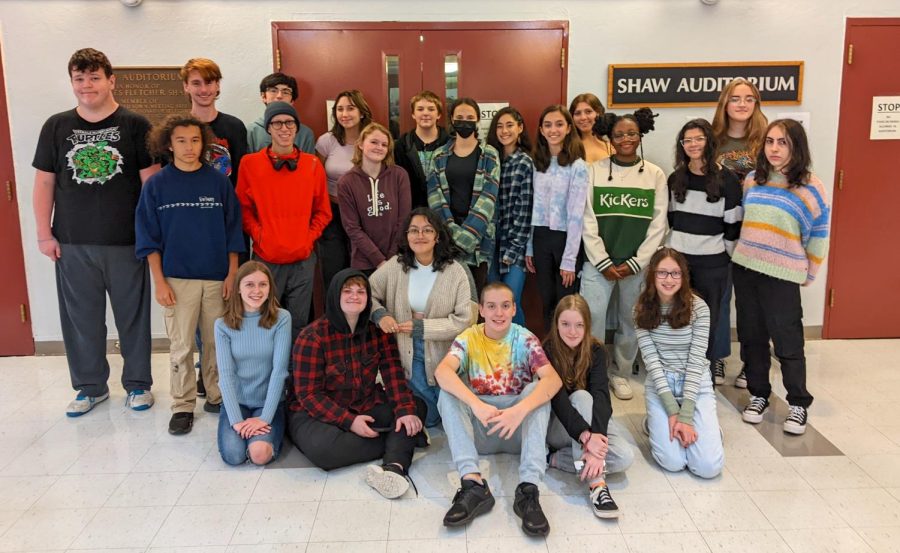Air-conditioned classrooms connected by bare and skinny hallways, treks down neighborhood streets and through mud to get to one of three school buildings, daily trips down memory lane in Watertown Middle School’s small gym.
The modular Watertown High School is a different world from the original Watertown High School, soon to be torn down. From now until the spring of 2026, the WHS community will be housed in the modular campus, with domains in Moxley Field, Watertown Middle School, and the Watertown Boys & Girls Club while a new high school is being built on the original Columbia Street site.
“Honestly, I don’t really care that I’m in the temporary high school for three years. I’m more focused on my senior year in the new high school,” said freshman Alex Galoyan, who will spend his last year at WHS in the inaugural year of the new building. “I liked the middle school a little better though because of the unique architecture. It [made] it easier to know where you are in the building.”
Senior Isabella Sadkowski said, “I don’t think that it’s very ideal to spend our senior year in a modular building, but we just have to make the most of it.”
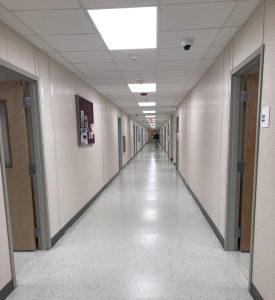
She did, however, “like how they made it really feel like a school, as best as they could.”
Among the WHS students who spoke with the Raider Times, the majority of complaints about the modular school focused on the unadorned hallways. The walls first resembled whiteboards, making it difficult for students to recognize where they were. However, as the school year has progressed, there are more and more signs advertising clubs, events, and the recent class elections.
“[The hallways] all look the same and they are too thin for four grades,” said Galoyan, mentioning the other common complaint that the hallways are too narrow. This causes traffic with more than 700 students budging their way through to class.
Students aren’t against the new school. “I like the size of the rooms and the amount of natural lighting in each classroom, it makes them feel spacious and welcoming,” said one student.
And while moving between Moxley Field, WMS, and the Boys & Girls Club “doesn’t always feel convenient,” as one student put it, it has its perks for some students.
“It gives me a chance to step outside, stretch my legs, and get some extra steps in,” said Natalie Galoyan.
The junior finds that traveling between campuses “helps me clear my mind and recharge, which can be especially refreshing during a long school day.”
Natalie also runs for the school’s cross-country team, which practices at Victory Field, a 20-minute walk from Moxley Field, as opposed to the 10-minute walk it was from the old high school. The team has embraced this longer commute, using it as an extra warm-up.
But, not all students in clubs or on sports teams have been able to adapt so easily though. One musician who now plays in the WMS band room found the new location “difficult because it can get hard to make it to class on time or store our instruments during classes prior to band.”
And, what do the WHS faculty think?
“Our students and staff are great. They have been patient and flexible with any changes or hiccups that we’ve encountered,” said Adrienne Eaton, one of two assistant principals. “There are always a few things to improve on, fix, or change now that we are actually living in the space, but I think that’s to be expected.”
Among challenges for teachers is the lack of space in the modular school compared with the old one. There are “lots and lots [of supplies] to move and not the same kind of storage space that I used to have,” one teacher said. “So unpacking and sorting is an ongoing process.”
“The most challenging part of the move to Moxley was having to figure out how to fit what we need into the smaller space,” said Erin Piazza, the school’s librarian.
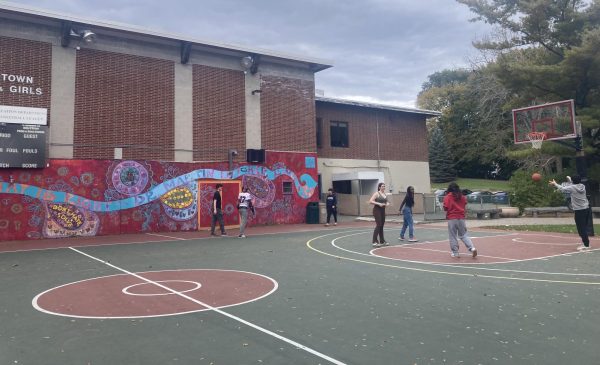
The modular high school has a library in the Moxley Field building that is significantly smaller than the old library, but still includes books, tables, computers, and makerspace materials. Once Piazza had decided which books would be on display, she “wanted to make sure to save space for seating areas so that students can still use the library to sit and work.”
Teachers who spoke with the Raider Times had very few complaints.
“I love the room size, the newness, and the air conditioning,” said Spanish and Italian teacher Maria Berardinelli.
She did, however, feel “that there is much less privacy for calling parents and/or talking to students one-on-one.”
There also isn’t a language lab, affecting language curriculums and the Seal of Biliteracy testing.
With no cafeteria, gym, or auditorium on the premises of Moxley Field, students resort to using WMS for the cafeteria and theater, and the Boys & Girls Club for gym classes.
“It’s definitely better than if we were doing gym or having lunch in the small amount of grassy area around the building,” said one student.
In terms of the arts department, Robin Wilson of the theater program wrote in an email that she feels “very lucky to be using the middle school stage, happy to have any stage at all!”
She is currently running rehearsals there for “12 Angry Jurors,” the WHS fall play. Her classes, however, take place in classrooms, which is different from at the old school, where they were held in the auditorium.
“This helps actors push out of their comfort zones even more, being in a closer, more intimate environment,” she wrote.
So with students, teachers, and faculty feeling the pros and the cons of the modular school, this is still the setting of Raider Nation for the next 2.5 years.
“What’s great is that we have all of the same resources that we had at 50 Columbia St., they just may look different,” wrote Eaton in an email. “Library? We have one and students are using it! Math and Writing Labs? Right there next to the library and available all day! Before and after school tutoring? Still happening! Clubs and athletics — we’ve got them! Mental health staff and guidance counselors? Here and ready to support you.”
–Nov. 14, 2023–




